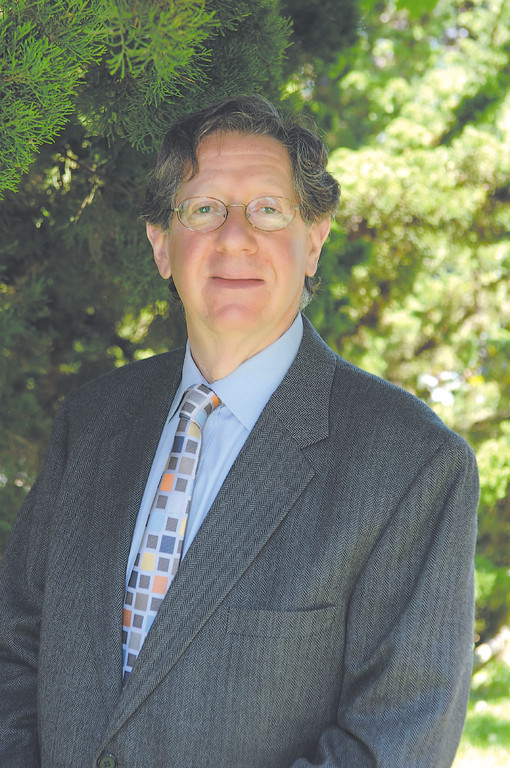It’s Sukkot … time for our New Year literary roundup
“Sukkot is the Jewish calendar’s season of joy. This is true on many levels. Spiritually, we have emerged from Yom Kippur newly unburdened of our sins. Materially, the overflowing granaries attest to a successfully concluded growing season. And nationally, the pilgrimage to Jerusalem brings together all the diverse communities to reaffirm their devotion to One G-d and one destiny. With spirited anticipation, the throngs of Jews proceed to the Beis HaMikdash (Temple), to bask in the aura of the Shechinah (Presence of G-d) that rests at the center of the world.”
With this quote from the latest volume of the “Encyclopedia of the Taryag Mitzvoth” as prologue, this week’s essay will be devoted to brief citation of several literary works themed to both the upcoming holidays, some observations on the contemporary religious scene, and some new English translations of the Torah readings of Genesis.
Maggid Books recently published an anthology entitled, “Hilkhot Mo’adim: Understanding The Laws of the Festivals,” a compilation of halacha (laws) dealing with some of the most important facets of holiday observance.
With Sukkot upon us, it is worthy to note that this work by Rabbi David Brofsky of Jerusalem’s Midreshet Lindenbaum deals in great detail with the building of the sukkah — its dimensions, walls, sekhakh, as well as the laws detailing the sukkah’s use for meals and habitation. Also dealt with are the practical laws concerning lulav and etrog, the arava, and Hoshana Rabba observance. This section emds with a detailed survey of the observances of Shemini Atzeret and Simchat Torah that conclude this holiday season.
Rabbi Brofsky’s method in dealing with the evolution of the laws of observance is unique: he discusses the many debates of Jewish law from Talmudic times to current modern Orthodox poskim such as Rav Aharon Lichtenstein and Rav Yosef Soloveitchik, of blessed memory.
Also to be noted is the latest Yeshiva University publication of “Torah TO-GO” for Sukkot 5774 with essays by Rabbi Hayyim Angel, Rabbi Daniel Feldman and Marjorie Glatt, among others, who all skillful apply holiday themes and observance to Bible commentary, history and practical halachah.
The recent publication of “Conversations” [issue 17, autumn 2013], is themed to “Orthodoxy: Soul Searching,” with 15 essays on such varied themes dealing with modern orthodoxy and its social impact and relevance, theology and ethics, racism and chosenness, and the re-imagining of the orthodox synagogue and relevant gender issues.
Of note is the lead article by Rabbi Marc Angel entitled, “Re-imagining Orthodox.” Consider the following observation:
“There is a feeling among a significant segment of Orthodoxy that the gedolim, great rabbinic sages, are the only ones authorized to propound the ‘true’ views of Torah. Only they have full access to Daas Torah (Torah knowledge). Yet, the only ones who qualify to be in the ranks of the Gedolim are those who pretty much subscribe to the dominant right-wing Orthodox worldview.”
Further on Rabbi Angel continues with the following rather sharp opinion:
“This tendency leads to authoritarianism, conformity and passivity. It promotes narrow and obscurantist views as being the sole legitimate views of Orthodox Jews. This is a vast disservice to Orthodoxy in general, and a particular disservice to thinking Jews who seek to live a Torah life without turning off their own brains.”
The balance of this essay further elaborates on this theme with citations from many sources that should be familiar with most of our readers.
While one may or may not agree with Rabbi Angel, his views are surely worth your attention and serious consideration.
But, there is more to his teaching. Just consider his recent words concerning the Sukkot holiday:
“Sukkot is a festival tuned in to the issue of life’s transience. The sukkah is a temporary structure, reminiscent of the wanderings of the Israelites in the wilderness in ancient times. It doesn’t have a roof, reminding us that we are subject to the vicissitudes of nature. The lulov, etrog, aravot and hadasim remind us of the harvest, of the recurring cycles of nature, the cycles of birth, growth, decline and death.…While Sukkot highlights the transience of life, it also turns our thoughts to the Eternal G-d who is not transient.” [“Transience and Permanence: Thoughts for Sukkot,” Institute for Jewish Ideas and Ideals, 5774].
These are surely teachings that bring to us an everyday reality that should indeed give us all pause.
FOR FURTHER STUDY
With this year’s Torah reading cycle just about to come to its annual conclusion please take note of the recent publication of the following excellent works.
First listed here is the recent translation of the Kli Yakar on Genesis, volume one by Dr. Elihu Levine, published by Menucha Publishers with an eloquent introduction by Rabbi Berl Wein.
Next we have an anthology of the writings and teachings on Genesis by Rabbi Joseph B. Soloveitchik entitled, “Chumash Mesoras Harav: Sefer Bereishis” compiled by Dr. Arnold Lustiger with a beautiful foreword by Rabbi Menachem Genack. Dr. Lustiger was the compiler of the Koren Siddur with the Rav’s commentary, and this work follows in train the excellent research and scholarship that is the signature of Dr. Lustiger’s legacy.
Also, please note that Rabbi David Etengoff of Cedarhurst has established a specific link from his archive of 13 of the Rav’s English shiurim on Sukkot, lulav, Hoshanah Rabbah and related matters at http://tinyurl.com/p38u3jx. Utilize this excellent site in preparation for your holiday Torah learning.
Lastly, once again the Sh’or Yoshuv Institute of Lawrence has published an excellent booklet entitled, “The Commentators’ Sukkos/Simchas Torah reader” written by one our generation’s great scholars and Gedolim, HaRav Yitzchok Sender, shlita. Within this 32 page booklet are 29 Divrei Torah themed to help enhance your appreciation of the Sukkot observance. Though brief, as is Rav Sender’s style, they each serve to eloquently help to give our appreciation of this season of joy both a smile on our faces and upon our hearts.

 80.0°,
Partly Cloudy
80.0°,
Partly Cloudy 




